Rank Major general Name Ivan Panfilov | Years of service 1915–1941 | |
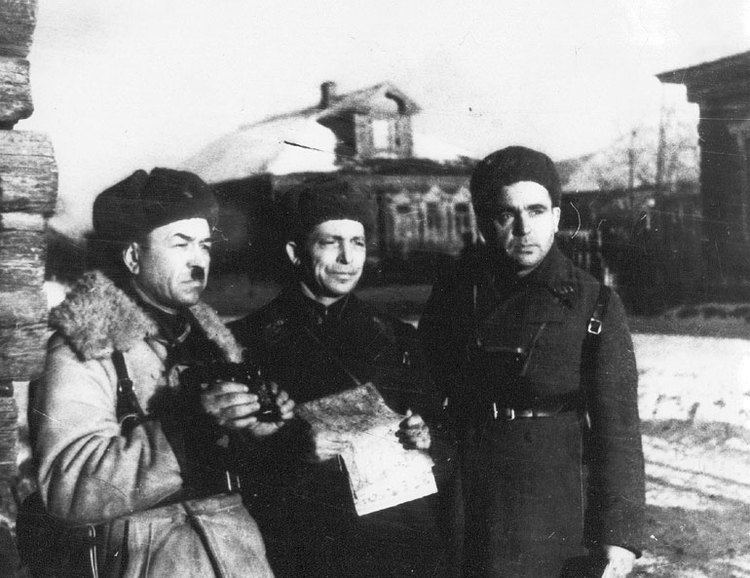 | ||
Awards Hero of the Soviet UnionOrder of LeninOrder of the Red Banner (3)Jubilee Medal "XX Years of the Workers' and Peasants' Red Army" Battles and wars Similar People Mikhail Tukhachevsky, Joseph Stalin, Pyotr Nikolayevich Wrangel | ||
Commands held 316th Rifle Division | ||
Russian championship freestyle 2010 ivan panfilov
Ivan Vasilyevich Panfilov (Russian: Иван Васильевич Панфилов; 1 January [O.S. 20 December 1892] 1893 – 18 November 1941) was a Soviet general and a posthumous Hero of the Soviet Union, known for his command of the 316th Rifle Division during the defense of Moscow at the Second World War.
Contents
- Russian championship freestyle 2010 ivan panfilov
- Statue of Ivan Panfilov in Astana CC
- Early life
- Civil War
- Central Asia
- Battle of Moscow
- Aftermath
- Literature
- Controversy
- List of places named after Ivan Panfilov
- Portrayal in the media
- References
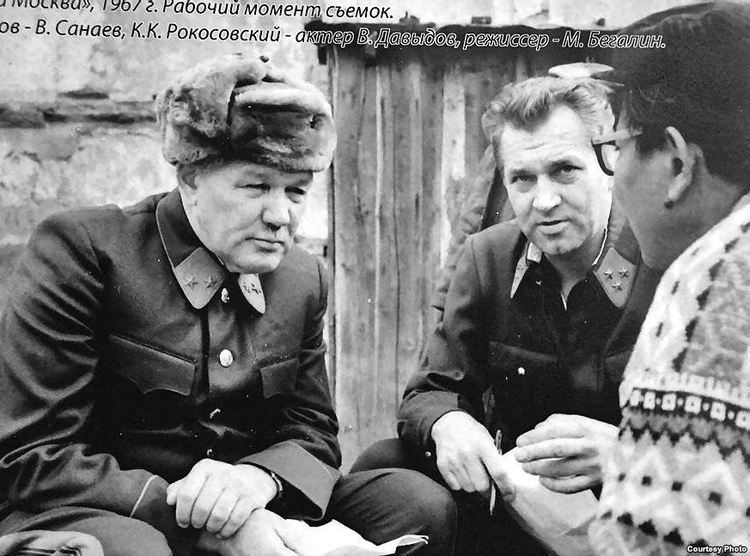
Statue of Ivan Panfilov in Astana [CC]
Early life
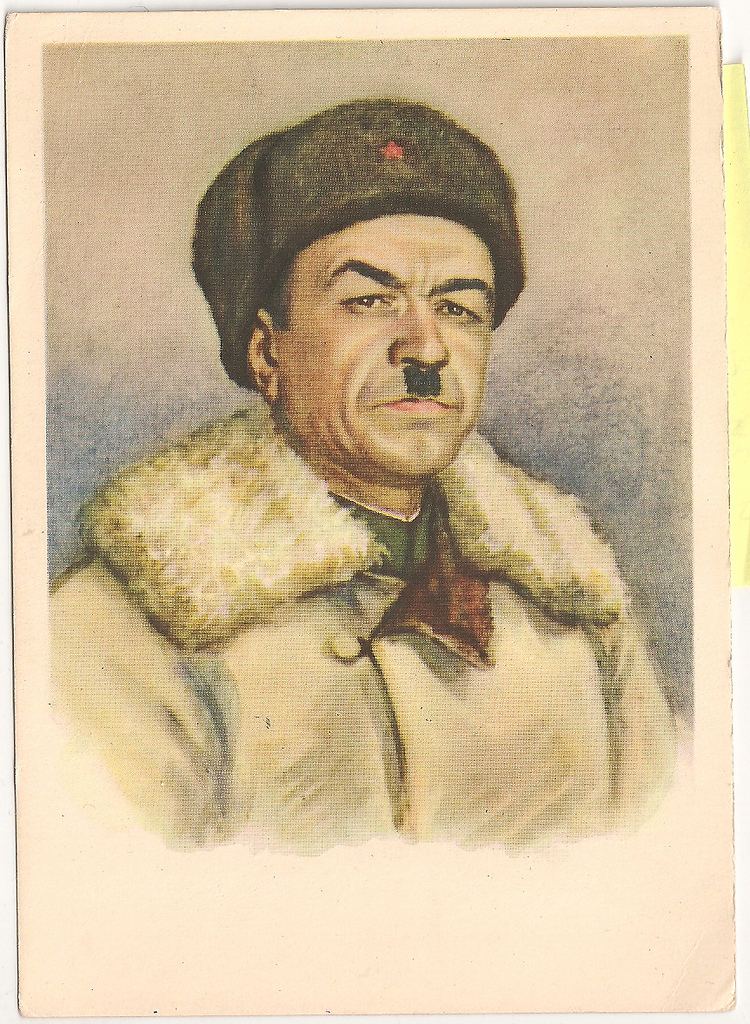
Panfilov was born to a clerk's family in Petrovsk. After the death of his mother in 1904, the child was forced to quit school and started working in a local shop when he was twelve years old. His father died in 1912.
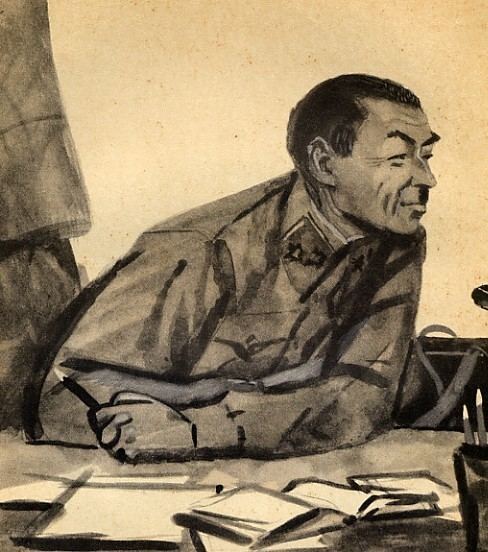
In 1915, during the First World War, Panfilov was drafted into the Imperial Russian Army and stationed in the 638th Olpinsk Infantry Regiment. Afterwards, he was transferred to the Southwestern Front, where he was promoted to sergeant. During 1917, following the February Revolution, Panfilov was elected by his fellow soldiers to be a member of the Regimental Soviet.
Civil War
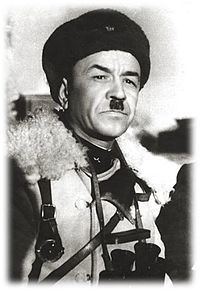
After the October Revolution and the beginning of the Russian Civil War, Panfilov volunteered into the nascent Red Army in 1918, where he was stationed as a platoon commander in the 25th Rifle Division under the command of Vasily Chapayev. In March 1919, the division was sent to the Urals to confront the Cossack White army led by Alexander Dutov, a follower of Admiral Aleksandr Kolchak. In the autumn, Panfilov's regiment was transferred to the southern city of Tsaritsyn, taking part in the battle against Anton Denikin's forces. During the campaign, Panfilov contacted typhus and had to be evacuated to the rear.
In April 1920, after recovering, he volunteered to return to active duty. He was assigned as a platoon commander to the 100th Infantry Regiment and fought in the Polish-Soviet War, joining the Russian Communist Party (Bolsheviks) in September (membership number: 0291274). For his performances during the fighting, Panfilov was awarded the Order of the Red Banner in 1921. Afterwards, Panfilov joined the 183rd Border Battalion in Ukraine and took part in counter-insurgency operations against local guerrillas. In November 1921, he entered the Sergey Kamenev Infantry School in Kiev. In the same year, he married Maria Kolomietz, with whom he had five children: four daughters – Valentina, Evgenia, Galina and Maya – and a son, Vladlen. After graduating in September 1923, he was posted to the 52nd Yaroslavl Infantry Regiment with the rank of company commander.
Central Asia
In March 1924 Panfilov volunteered for the campaign against the Basmachi and traveled to the Turkestan Military District. In April he was given command of a company in the 1st Turkestan Rifle Regiment. In October he was transferred to head the Regimental School. In August 1925 he was returned to the field and later commanded an outpost in the Pamir Mountains. In April 1928 he was promoted to command a regiment, a post he held for three years. His involvement in the quelling of the Basmachi revolt gained him his second Order of the Red Banner, awarded in 1929.
In June 1931 Panfilov was appointed commander of the 8th Independent Rifle Battalion. In December 1932 he was transferred to head the 9th Red Banner Mountain Infantry Regiment. From 1935 Panfilov served in an instruction post in the Vladimir Lenin Red Banner Military Academy in Tashkent. In September 1937 he was designated the Central Asian Military District's chief of staff. In October 1938 he was assigned as the military commissar of the Kyrgyz SSR, and promoted to Combrig on 26 January 1939. On 4 June 1940 he received the rank of a Major General.
After Germany invaded the Soviet Union on 22 June 1941 Panfilov began mobilizing reserves to be sent to the front. On 12 July he was assigned as the commander of the 316th Rifle Division, a new unit being formed in Alma Ata. The division consisted mainly of reservists from the Kazakh and Kyrgyz Soviet Republics.
Battle of Moscow
On 27 August 1941, the division arrived in Borovichi, near Leningrad, and joined the Fifty-Second Army. On 2 September, it was consigned to the reserve, spending a month in the rear.
On 7 October, after the Wehrmacht commenced Operation Typhoon, the division was sent to the Moscow region, where it arrived on the 10th. It was stationed in the left flank of General Konstantin Rokossovsky's Sixteenth Army and tasked with defending a 41-kilometer long sector to the south of Volokolamsk, a part of the Mozhaisk fortified line.
On 15 October, the Germans attacked the region. After two weeks of fighting, the 316th was abandoned by the other defenders. Together with the rest of the Sixteenth Army, the division retreated towards Moscow. In spite of suffering heavy casualties, the 316th managed to significantly delay the German advance on the capital, buying time for the defenders of the city. On 11 November, Panfilov was awarded his third Order of the Red Banner for the personal courage he displayed during the fighting. According to historian Richard Overy, Marshal Georgy Zhukov told Panfilov that he would be shot if he were to retreat.
The 316th Division's new line of defense, near the village of Dubosekovo, was overrun by the Germans on 15–16 November; Soviet newspapers later claimed that on the 16th, twenty-eight soldiers from the division's 1075th Regiment destroyed eighteen German tanks while fighting to the last man, though an investigation by a Soviet military judge in 1948 revealed the tale was exaggerated. The threat to Rokossovsky's flank prompted the Stavka to send in the reserve 78th Siberian Rifle Division. The 78th soldiers' were forced to retreat after three days, but the Wehrmacht's advance was slowed down due to the Soviets' resistance and the weather conditions, gradually grinding into a standstill.
On 17 November, the People's Commissar of Defense passed a decree to grant the 316th the status of a Guards formation, renaming it the 8th Guards Rifle Division. On the 18th, a group of correspondents visited Panfilov's command post in the village of Guseniovo, and informed him of the resolution. While he briefed the journalists in the open, they came under a mortar attack. Panfilov was killed by a shell splinter. The Defense Commissar's edict was brought into effect on that day.
Aftermath
On 23 November, the 8th Guards was awarded the sobriquet Panfilovskaya in honor of its fallen commander, and its soldiers were henceforth known as "Panfilov's Men" (Panfilovtsy). It took part in the Red Army's counter-offensive which drove the Wehrmacht away from Moscow during December. The division ended the Second World War in Latvia, as part of the forces besieging the German pocket in Courland.
On 12 April 1942, Panfilow was posthumously awarded the title Hero of the Soviet Union. The general is buried in the Novodevichy Cemetery alongside two other Heroes of the USSR, Lev Dovator and Viktor Talalikhin.
Literature
Panfilov's character gained recognition through the book trilogy authored by Alexander Bek, which described the fighting around Moscow through the eyes of a Kazakh officer who served in the 316th Division, Baurzhan Momyshuly. The books - Volokolamsk Highway, Several Days and General Panfilov's Reserve – were popular both in the USSR and abroad. Published in Hebrew in 1946, Volokolamsk Highway "held an almost cult status in the Palmach and later in the Israeli Army" according to media researcher Yuval Shachal, and became a standard tactical handbook in the Israeli Defense Forces. Inspired by the novel, future Israeli Chief of the General Staff Motta Gur once held a "Panfilov Roll Call" for two soldiers who deserted from his company when he was a young officer, shaming them in front of the other troops; he wrote that it was a common practice in the IDF at the time. During 2005, Ehud Barak told "we, as young officers, were raised on Momyshuly." Volokolamsk Highway was popular in Cuba, as well. Fidel Castro told Norberto Fuentes that "the idea to use the love of the Motherland for convincing people to support me, came to me after reading the novel." The novel was well known among members of the Cuban Revolutionary Armed Forces; In 1961, Raul Castro told a journalist that every regimental commander was "compelled to have a copy". In Jesús Díaz's acclaimed 1987 novel Las iniciales de la tierra, the protagonist cites Bek's book as a major influence on his life. The novel was also included in the list of "compulsory reading" for members of the Chinese Communist Party and People's Liberation Army personnel. On 27 June 1963, the East German Ministry of National Defense issued its Order no. 50/63 - drafted on the initiative of Walter Ulbricht - which introduced Volokolamsk Highway as part of the political education program for the soldiers of the National People's Army. In the official history of the NVA, historian Major General Reinhard Brühl had cited it as having a major influence of the soldiers.
Bek's Volokolamsk Highway served as one the settings for an eponymous series of five plays by Heiner Müller, written from 1984 to 1987. The first part, "Russian Opening", was based on Heinrich von Kleist's The Prince of Homburg. In Müller's reinterpretation, Momyshuly assumes the role of the Great Elector.
Momyshuly had himself turned to writing after the war, and discussed the battles near Volokolamsk in several works, like Moscow is Behind Us and Our General, Ivan Panfilov.
Controversy
The director of Russia's State Archive of Socio-Political History Sergei Mironenko called the legend of Panfilov's 28 Guardsmen to be a deliberate falsification. On March 16, 2016, Sergei Mironenko left his post after he reached the age limit for civil servants in 65 years. He retained the position of the supervisor of the State Archive. Mironenko claimed that he dismissed from his post at his own request, in order to "focus on scientific work": "Do you really think that I would not fight if it was not my decision? ... There is nothing to worry about in my dismissal."
The Russian Culture Minister was quoted saying "even if this story was invented from start to finish, if there had been no Panfilov, if there had been nothing, this is a sacred legend that shouldn't be interfered with. People that do that are filthy scum."
List of places named after Ivan Panfilov
Portrayal in the media
Ivan Panfilov has been depicted by the following actors in film and television productions:
